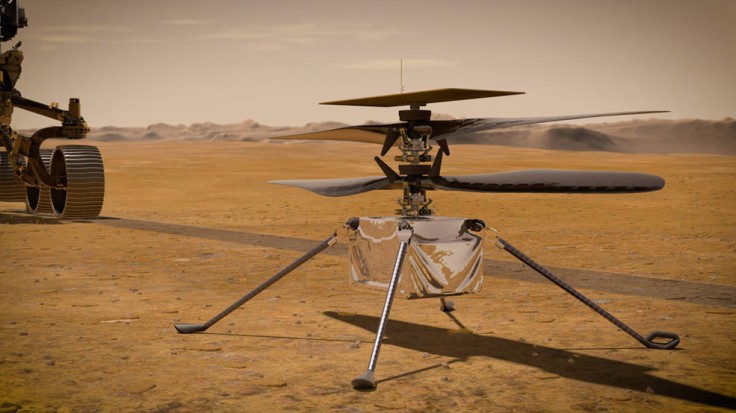NASA officials in charge with Mars sample return (MSR) is abandoning a previous concept that involves a European Space Agency (ESA) fetch rover. Instead, the agency will be deploying two mini helicopters to the red planet.
In a press conference, NASA announced today, July 27, that they are redesigning the mission that originally involved a fetch rover that would "touch down on its own lander."
The agency is now planning to send two Ingenuity-class helicopters to Jezero Crater on Mars. The two devices will "fly to the sample tubes, scoop them up, and bring them to a lander waiting nearby," as per Gizmodo.

MSR Helicopters Will Have Legs and Arms
In terms of size and mass, the two helicopters will be similar to Ingenuity, however, there will two key differences in features, NASA MSR program manager Richard Cook told reporters.
Cook said that the helicopters will have landing legs that include mobility wheels at the bottom of them, as per Space.com.
MSR program manager explained that this new capability will let the helicopters "traverse across the surface."
It will also have a mini robotic-arm on each of the craft, which will let the drones pick up the sample tubes that Perseverance leaves behind.
If it is necessary, the helicopters can land near a sample tube, then roll over to pick the samples. Afterwards, they can fly to a spot close by the Mars ascent vehicle.
Upon touchdown, the helicopters can roll closer to the vehicle and put the sample just within reach of the ESA-built transfer arm.
The decision to redesign the mission means that there will be no ESA rover that will be sent on Mars in the future.
The new plan, however, let NASA and ESA fulfill the sample return mission with less cost and complication.
Read Also: NASA Asks Public for Opinion on Its Mars Sample Return Mission
NASA Drops Plan for a Second Lander
David Parker, director of ESA's human and robotic exploration, told reporters that including the rover would mean "a second launch, second lander."
According to NASA, they are still working out the revised MSR plan. There is no estimate yet on the cost according to officials, however, sending a single lander is expected to be less costly than sending two landers.
Cook said that there is no identified primary mission for the helicopters yet. They may, however, be utilized to observe the area around the Martian ascent vehicle.
The redesign of the MSR mission was partly inspired by the impressive performance of Curiosity rover, said Thomas Zurbuchen, associate administrator of NASA's Science Mission Directorate.
The rover has greatly exceeded its lifespan on planet Mars. It will be celebrating its 10 years on Mars on Aug. 5
The now dropped second lander requirement was only conceptualized in March. This is after the MSR Independent Review Board claimed that a dual lander capability "may improve the probability of mission success," as per Space.com.
However, including the second lander means the mission's launch date will be pushed two years back to 2028, while return to Earth will be moved to 2031.
Related Article: NASA, ESA to Share New Details About Mars Sample Return Next Week









